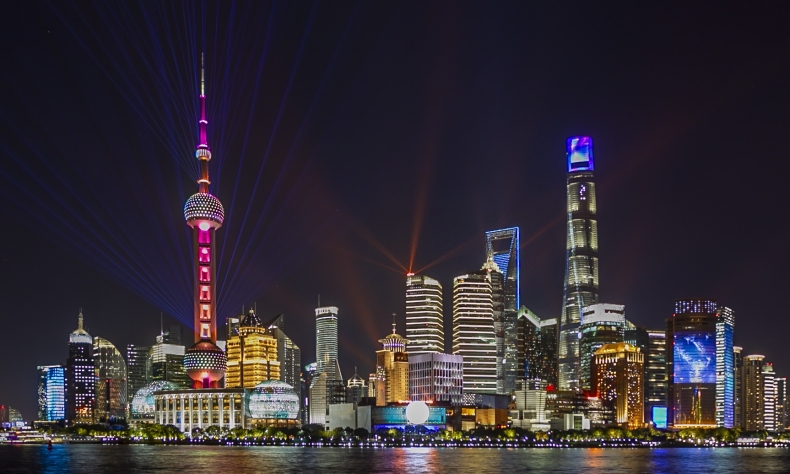Pudong New Area: The Pioneer

In the coming years, Pudong is supposed to focus on the coordination of various systems and try to carry out reform by taking into account the overall process of business and industrial development.
The Communist Party of China (CPC) Central Committee and the State Council on July 15 jointly released a guideline to uphold high-level reform and opening up in Pudong New Area in Shanghai, proposing to turn Pudong into an attractive district boasting creativity, competitiveness, and influence by 2050. The area is going to act as a global example in terms of high-quality and high-efficiency urban management.
This guideline signals that the second centenary goal of the CPC, which aims to forge a great modern socialist country that is prosperous, strong, democratic, culturally advanced, harmonious and beautiful by the middle of the century, is being taken from blueprint to reality.
The perks of Pudong
Located in the east of Shanghai and at the eastern edges of the Yangtze River Delta, Pudong is positioned at the estuary of the Yangtze River. In April 1990, the Central Government decided to develop Pudong, making it a new area with special economic policies.
Thanks to three decades of hard work, the former farmlands have been replaced by an advanced modern city boasting well-developed facilities and functions. The development of Pudong suggests that China is further opening up its cities aligning the Yangtze River. When Shanghai grows into an international economic, financial and trade center, other cities nearby and along the Yangtze River, too, will be able to ride the tide. In this sense, Pudong is a highlight and symbol of China’s reform and opening up.
Three decades on, China now enters the new stage of building a great modern socialist country in all respects, facing complex variables. No experience can be drawn on to deal with the unprecedented mission. Thus, there must be a pilot zone that serves as a vanguard, offering its experiences and answering questions from other areas that encounter difficulties in their modernization drive.
Then why has Pudong specifically been selected to serve this purpose?
Pudong has had the resources to realize high-quality development since the 1990s. As the largest economic center of China, Shanghai is tasked with developing itself into an international economic, financial, trade, shipping, and sci-tech innovation stronghold. Pudong, in turn, is expected to be the major player in the achievement of these five goals.
Pudong is equipped with a number of advantages essential for high-level economic development. Take the example of advanced core technology—a sector vital to modernization that can only be independently developed by China. Pudong is cracking nuts in term of advanced technology, such as high-end integrated circuit components, as well as basic software and hardware.
Additionally, Pudong is endowed with preferential policies to further reform and opening up. As China’s reform continues, some stumbling blocks are yet to be removed. For instance, there is much room for improvement in terms of offshore RMB transaction, cross-border trade settlement and overseas financial services.
Meanwhile, Pudong is experienced in the efficient management of urban areas, and in developing a harmonious relationship between man and nature.
The urgent task for the area is: exploring ways to enhance equal and high-quality public service, so that the public will have a stronger sense of satisfaction and security.
A transfer of power
There are three key points in developing Pudong into a pioneer area for socialist modernization.
First, to support Pudong’s role as a pioneer in the new journey of China’s socialist modernization.
Second, to position Pudong as a central intersection of the domestic market and a strategic link in China’s new development paradigm of dual circulation, which underlines the importance of domestic and overseas markets reinforcing one another. The area is expected to lead the development of the Yangtze River Delta in all respects.
Third, to push forward reform and opening up in the new area to set an example for other regions.
Only when restrictions are erased, can the momentum of development be fully released. In the past three decades, Pudong has acted as the first finance and trade zone, the first bonded zone and the first pilot free trade zone. According to the most recent decisions by China’s top legislature, Pudong will be given as much power as possible in its exploration of better ways to push forward socialist modernization.
Entering the new development stage, China’s reform and opening up is at a historic critical point, faced with more arduous tasks. More efforts are needed to break down the barriers preventing this further development.
In the coming years, Pudong is supposed to focus on the coordination of various systems and try to carry out reform by taking into account the overall process of business and industrial development, so that various practices and systems involved can then be efficiently integrated and converge into a greater force than when separated.
Meanwhile, Pudong will pursue an all-dimensional, multi-tiered and wide-ranging opening-up pattern, so as to form an open economic system that conforms to international common practices, which can in turn be followed by other parts of China.
In sum, it will be up to Pudong to deliver its progressive fruits to the whole of society.
 Facebook
Facebook
 Twitter
Twitter
 Linkedin
Linkedin
 Google +
Google +










